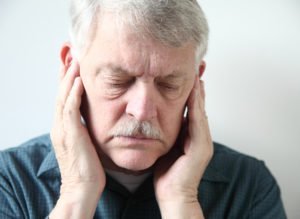 While many people refer to jaw pain as TMJ, the acronym actually stands for temporomandibular joint, the jaw joint itself. TMJ disorders are common, so how can you know if you are suffering from a deeper problem or if your jaw is just tired? Answer these 10 questions to learn if you may be suffering from TMJ dysfunction.
While many people refer to jaw pain as TMJ, the acronym actually stands for temporomandibular joint, the jaw joint itself. TMJ disorders are common, so how can you know if you are suffering from a deeper problem or if your jaw is just tired? Answer these 10 questions to learn if you may be suffering from TMJ dysfunction.
#1 Does the Pain Radiate Toward Your Ear or Neck Causing TMJ Pain?
TMJ pain rarely is located solely in the jaw. Pain tends to radiate up toward the ears and down toward the neck, especially when an upper cervical misalignment is responsible for the pain (but we’ll discuss that more later).
#2 Does It Hurt to Open Your Mouth Wide?
This could be the result of overuse, but it may also indicate that there is something deeper wrong with the jaw. However, if the pain only occurs when you open your mouth wide, you can try resting the jaw for a few days and eating softer foods to see if the pain goes away on its own.
#3 Do You Have Pain in Other Parts of Your Face?
Right next to the jaw joint is the trigeminal nerve. This nerve is located on both sides of the face and branches into three parts running toward the forehead, the cheeks, and the jawline. This is the nerve the provides feeling for your entire face, so if the problem with your jaw is bad enough, this nerve can be affected, and you may have pain in other locations.
#4 Is Your Jaw Making Noise?
A popping, clicking, or grinding sound when you are chewing or opening your jaw wide may indicate a jaw problem. If you do have a clicking jaw, don’t be surprised if the sound comes and goes. Not all noise indicates an underlying issue, and the absence of noise doesn’t mean the jaw is fine. However, this is a good sign that your jaw is out of alignment.
#5 Do You Have Frequent Headaches?
Headaches and TMJ problems often go hand in hand, and this is another indicator that the problem may be in your neck. Neck pain is a common symptom of both TMJ dysfunction and headaches. Since stress is stored in the neck, it is one of the primary triggers of both headaches and jaw pain.
#6 Is There Facial Swelling?
When the jaw is not properly aligned, it can lead to swelling on the sides of the face. This is particularly common if your TMJ pain is caused by trauma from an accident or injury. In this case, you may find that ice helps to relieve some of the pain. Ice is the natural enemy of inflammation. Heat, on the other hand, may make inflammation worse. Remember not to have the ice in direct contact with your skin. Always wrap an ice pack in a towel and set a timer so you don’t ice for longer than 20 minutes at a time.
#7 Does Your Jaw Get Stuck?
Do you sometimes find that your jaw locks into place and you need to give it a minute before you can either open or close it? Are you experiencing other problems with the range of motion of your jaw? If you answer yes to these questions, it indicates an underlying issue beyond just overuse.
#8 Have You Recently Been Injured?
If you have had a head or neck injury recently, this could be the underlying cause of your jaw pain. This type of injury is commonly caused by car accidents and sports accidents but could also be the result of things like a slip and fall or an assault. An x-ray can show if there is any structural damage. If not, misalignment is the likely problem.
#9 Do You Have Neck Pain and Earaches?
Beyond just radiating pain from the jaw, you may also be experiencing frequent earaches or a stiff or sore neck. Again, these accompanying symptoms point toward a problem in the neck. Upper cervical misalignments can affect how well the ears drain and lead to symptoms such as vertigo, tinnitus (ringing in the ear), and chronic ear infections. The proximity of the atlas (C1 vertebra), ears, and TMJ is an important factor.
#10 Have You Tried to Find Natural Relief for TMJ?
You may think that a misaligned jaw means you need to have surgery or see an orthodontist to get things situated again, but the answer may be simpler than that. Because jaw problems often stem from the neck, upper cervical chiropractors have been successful in helping many patients to overcome chronic TMJ pain.
When the C1 and C2 are misaligned, the surrounding structures shift to keep the head properly balanced. This, in turn, can affect the jaw, the facial nerve, the ears, and more. The only way to find long-term relief is to correct the underlying cause of the problem. Therefore, correcting the upper cervical misalignment is vital.
Upper cervical chiropractors are specifically trained to detect and correct even the slightest of C1 and C2 misalignments. The corrections are extremely gentle and safe for patients of all ages and health levels. There is no popping or cracking of the neck.
If you suffer from chronic TMJ pain, give upper cervical chiropractic a try, especially before trying a more invasive method of care. A no-obligation consultation may be your first step to getting rid of jaw pain for good!

